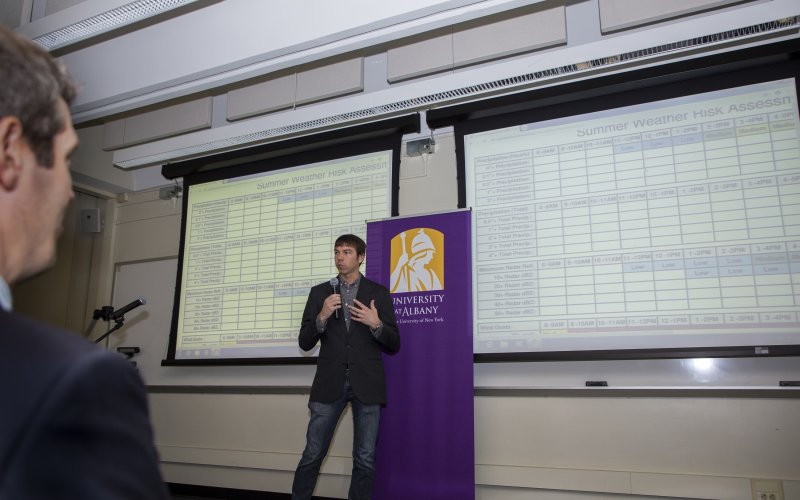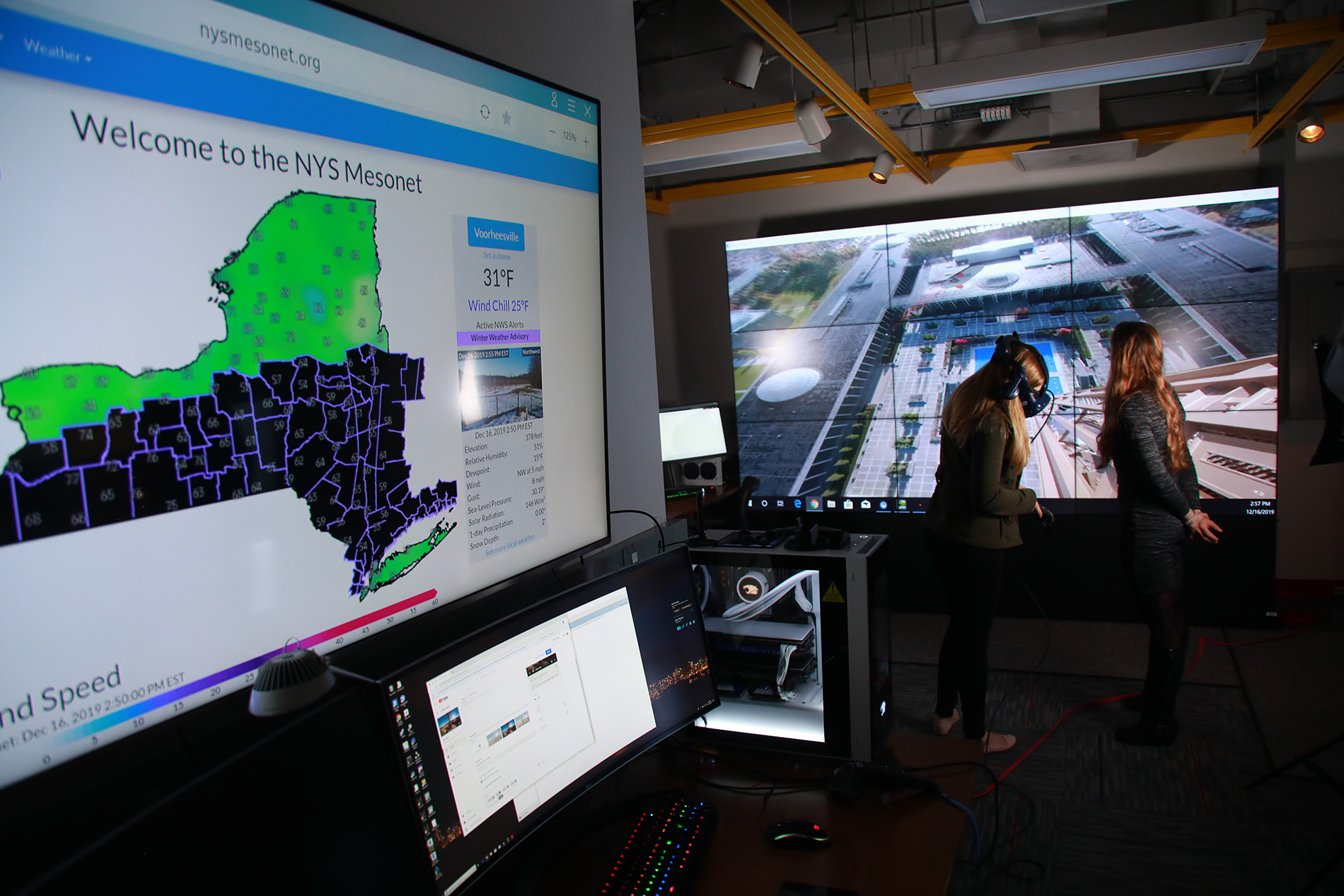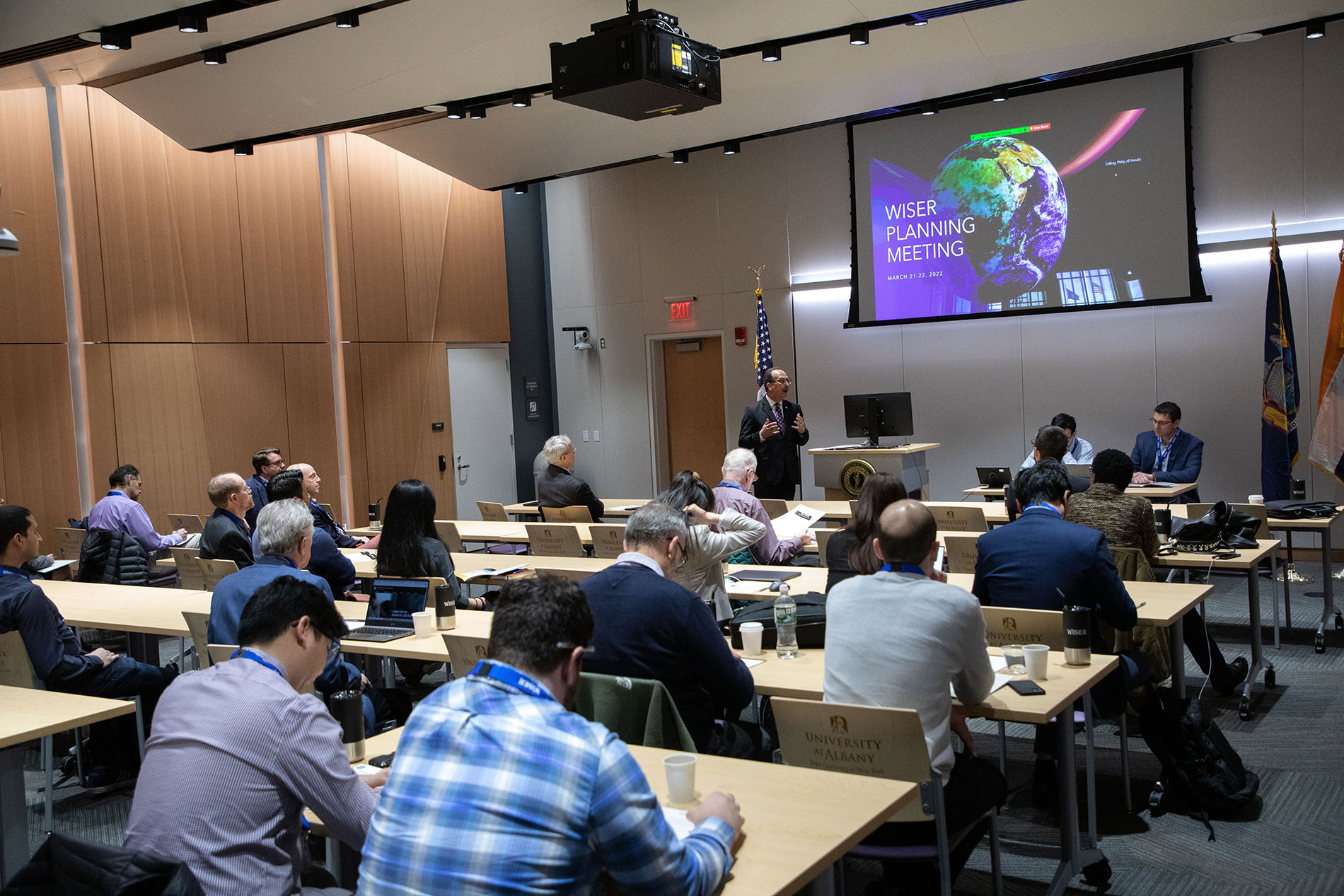New York Budget Boosts UAlbany’s Center of Excellence Funding to $1 Million

ALBANY, N.Y. (April 21, 2022) – The University at Albany is receiving another major boost in state funding this year to help New Yorkers tackle increasingly extreme weather events.
Funding in the recently adopted state budget for UAlbany's Center of Excellence (COE) in Weather and Climate Analytics increased from $800,000 to $1 million, in turn offering more support for its research and development that is brought to market through partnerships with public and private business entities in New York.
The COE has been funded consecutively at the state level since 2015 in large part due to the advocacy of elected officials, such as Senator Neil Breslin and state Assemblymembers Patricia Fahy and John McDonald.
Last year’s state budget increased the COE’s funding from $250,000 to $800,000. This year’s increase brings UAlbany’s COE funding to the same level as the other 13 Centers of Excellence backed by Empire State Development's Division of Science, Technology and Innovation (NYSTAR).
“New York is one of the most weather-vulnerable states in the country. Tens-of-billions of dollars are lost every year at the mercy of severe storms, and those numbers are only expected to increase with climate change,” said Chris Thorncroft, who directs UAlbany’s COE, along with the Atmospheric Sciences Research Center and the New York State Mesonet. “Our researchers are creating new and innovative solutions to help public and private partners with severe weather prediction and risk management, in turn improving New York’s resiliency and economy.”
“We are thankful to Governor Hochul and our state Legislature for valuing our COE and offering another critical boost in support.”
A More Resilient New York

The COE, funded through NYSTAR, taps into UAlbany’s network of 120-plus atmospheric and environmental scientists, the largest concentration in New York. It also leverages a massive trove of data from the NYS Mesonet, an advanced network of 126 weather stations located across the state and headquartered at UAlbany.
Last fall, UAlbany’s weather and climate researchers moved into ETEC, a $180 million, 246,000-square-foot research and development complex located on the Uptown Campus. ETEC is also the new home of the College of Emergency Preparedness, Homeland Security and Cybersecurity, bringing experts in extreme weather prediction, risk management and emergency response together under one roof.
The COE’s sole focus is on creating innovative tools that can be used to better understand and respond to extreme weather along with New York’s changing climate.
For example, COE researchers are working with the New York State Energy Research and Development Authority to develop customizable forecasting tools that offer electric utility partners real-time predictions on power outages, electrical load and renewable energy generation. Another partnership with Con Edison, the energy company that serves New York City and Westchester County, expanded the NYS Mesonet to include a specialized network of 17 weather-stations located at company properties in the City’s five boroughs.
New York’s educational system has benefited, too. Capital Region BOCES partnered with the COE in 2019 to create a weather dashboard that helps with decision-making around class cancellations due to inclement weather. COE researchers are aiding the state Department of Transportation as well with forecasting tools to remove snow and ice from the highways more efficiently.
“I'm overjoyed that our Center of Excellence has once again seen its funding raised in the latest New York State budget,” said Nick Bassill, a UAlbany meteorologist and the COE’s director of research and development. “We've been tasked by the state to work with partners across a number of industries to create smart solutions that help solve their weather-based problems. Luckily, that’s what we enjoy doing.”
New Partnership Opportunities

In March, UAlbany hosted energy industry executives from more than 20 companies at ETEC to offer an overview of Weather Innovation, Smart Energy and Resilience (WISER), a new proposed center funded through the National Science Foundation that aims to create advanced weather- and climate-based solutions for the energy industry.
The state’s increased COE funding will allow for the exploration of more partnership opportunities, such as WISER, while freeing up resources to create new decision-making tools. It also comes as UAlbany is launching a new Albany AI Supercomputing Initiative and has partnered with IBM to explore weather and climate impacts in New York.
“New York’s continued investment in weather and climate research is an economic driver in sectors such as renewable energy, transportation and artificial intelligence,” said Jan Woodcock, the COE’s director of operations. “I am elated with this investment and look forward to growing our relationships with industry partners.”




